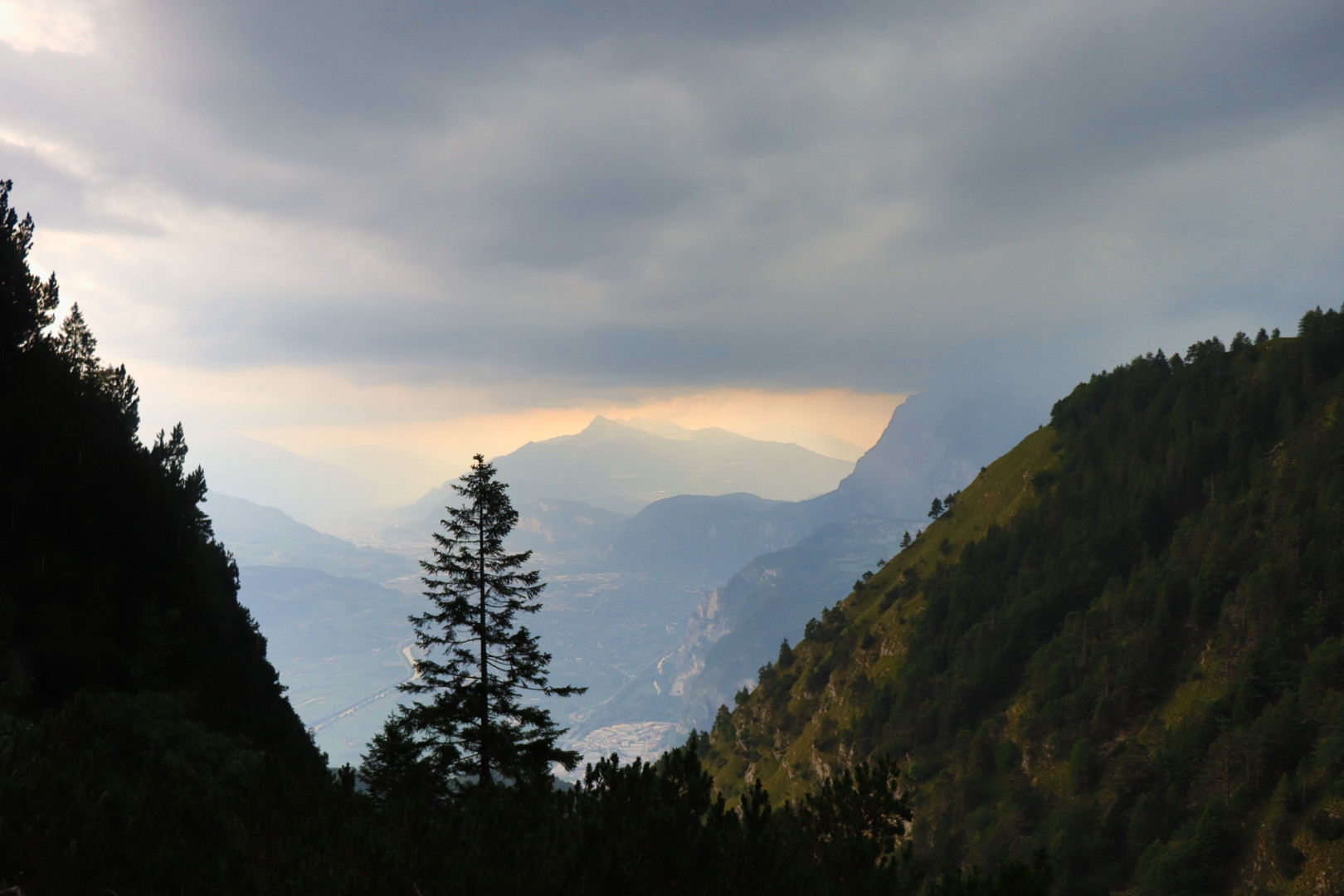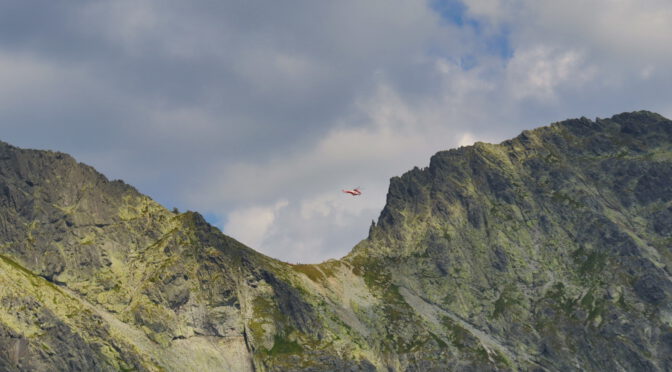Mountaineering is a dangerous pastime, make no mistake about it.
Last weekend I suffered a fall in the Dolomites in South Tyrol and injured my left arm badly, yet training and a fair share of luck saved me from far worse injuries.
So now is as good a time as any to give some information and guidance as to hazard prevention and preparations when making a mountain tour what I hope is helpful for other people.
This list is not trying to be comprehensive, obviously. The apparent reason is that I have never been outside Europe, so topics such as altitude sickness, dealing with very harsh climate or dangerous animals are (beside others) beyond the scope here.
I will also not touch upon the topic of climbing gear.
Hazard prevention and preparations
#1 Check the weather forecast
It is common sense that every outdoor enthusiast should be aware about weather conditions on a given day.
Though weather can be quite unpredictable in higher regions, the weather forecast will give you a good idea what to expect at a particular time. Don’t be fooled by comfortable temperatures down in low altitudes.
Blizzards and thunderstorms pose an immediate threat, wind and poor visibility are more than just minor inconveniences, and heavy rainfall or exposure to oppressive heat can wear you down quickly. And so does a marshy or exceedingly soft ground.
Avalanches are a serious hazard in certain terrains under certain circumstances (they most likely occur on slopes of 30° to 45° within 24 hours of a snow fall), and paying attention to official avalanche situation reports is mandatory in the winter months.
You may consider attending an avalanche rescue course conducted by Alpine clubs, and carry additional equipment if necessary (shovel, avalanche probe etc.).
#2 Use crampons or spikes on slippery surfaces
Generally, except maybe for the months July, August and September in altitudes below 1500 meters, I always complete my mountain gear with spikes although I have to carry an extra weight of around 0.4 kg (crampons weigh about twice as much).
Slipping and sliding down merely one meter can lead to serious injuries and loss or damage of important equipment. A pair of spikes or crampons (technical climbing) will provide the necessary grip to cross snow and ice fields safely (I usually go with Snowline Chainsen Pro spikes that are suitable for most boots and shoes).
#3 Use a helmet when negotiating steep slopes
Protecting your skull from rock and ice fall is never a bad idea, and the steeper the slopes and the more people around, the more you want to have a helmet on your head.
The helmet I own (Petzl Meteor) weighs less than 0.25 kg, can easily be attached to backpack straps and isn’t too unwieldy to carry around.
Unprovoked rock and ice fall is most likely to occur during spring time (melting snow or ice in cracks and crevices), icefall naturally in the winter months or in high altitudes.
#4 Insurance
Mountain rescue can be very expensive, and you have to make sure that rescue measures are covered by an insurance or some other device.
I am member of the German Alpine Club (Deutscher Alpenverein) where the membership includes a worldwide insurance cover; the membership dues are less than one hundred Euros per year (“A-member”). Being a passive member in the Bergrettung Tirol is one of the further options.
In this context I want to mention that a tetanus vaccination is important as well.
#5 Protect your essentials from getting drenched
Again, don’t be fooled by good weather at the beginning of a tour. I was once cycling in Corsica where the weather was just perfect at eight in the morning, so I was throwing all my stuff into my backpack without much of a second thought.
Later in the afternoon I got in the middle of a heavy downpour, what not only soaked me to the bones but rendered a good deal of my equipment useless (my complete first aid kit was a case for the trash can, for example).
A cheap and light backpack rain cover that could be purchased almost everywhere would have prevented this. Or you buy a slightly more expensive backpack that is endowed with an integrated rain cover in the first place.
You should stow your more sensitive gear into an extra plastic bag (mobile phones can be quite sensitive to moisture).
#6 Know what to do in a thunderstorm
This deserves an extra item on the list.
Thunderstorms are no unlikely occurrences in the mountains, especially in the summer, especially in the afternoon. You can sense them an appropriate time beforehand usually (e.g. increasing strength of the wind on a hitherto fine day).

When you find yourself in a thunderstorm and a lightning strike is likely, sit down on a insulating piece of material (e.g. jacket, rope) and keep a safe distance from via ferratas (metal), ridges and hilltops.
Gauge the time between flash and thunder. Every second means approximately 340 meters distance (speed of sound).
#7 Carry reliable light sources
“Two is one, one is none” the saying goes, and it certainly applies to essential equipment such as lamps and torches.
You want to carry two lamps, at least spare batteries for a quality headlamp. I possess a Petzl headlamp that provides a very bright LED light. The more expensive headlamps have rechargeable batteries though, which only in some cases can be removed/replaced.
Getting lost in a forest or traversing via ferratas in the dark is not an enjoyable adventure for most people.
#8 Carry reliable communication devices
Being able to communicate with the outside world is vital in remote areas, though devices may not always work properly there.
As I was hiking in secluded mountain ranges during the winter season I had a second mobile phone (an old Nokia) in a sealed pocket in my backpack, switched off and fully charged just for the case.
The excessive weight of power packs often is an issue, but in more remote places it is sometimes unavoidable having it in your backpack.
A separate GPS tracker might also be a good idea (though expensive), as well as downloading necessary maps beforehand. But keep in mind that an electronic device is not a substitute for basic orientation skills.
#9 Always go with company or at least plan for a worst case scenario
I am guilty of going on my tours mostly on my own, for the reason that I can march at my own pace and doing unappealing long tours that may stretch to ten hours or more in mountainous terrain.
You probably see why this is not a really prudent thing to do.
If you want to go on your own like me, you must at least tell a friend where exactly you are going to hike in the mountains, and/or send regular updates about your whereabouts (self-tracking with GPS).
Worst case scenarios where your physical ability to communicate may be impaired or be essentially gone as well as broken electronic should be taken into consideration beforehand.
#10 Calculate an appropriate quantity of water
Sometimes it can be tricky to find a compromise between the weight you are willing to carry around the whole day and the quantity of water you expect to consume. The calculation is easy: every additional liter of fluid is one additional kilogram.
Rule of the thumb is, for a male adult, two liters in summer and one liter in winter (day trip). For the case you have no idea where you will find water or whether there is any water at all, carry three liters in summer and two liters in winter (better don’t melt snow to obtain water for it lacks minerals and may be polluted; besides, melting snow wastes precious cooking gas).
Important: better fill your water into resilient metal cans. The cheap plastic cans may break if they accidentally fall down on harder ground (happened to me once in the Alps in midsummer, not funny).
#11 Also don’t forget essential gear such as:
an analog compass, sun glasses, sun cream, a knife, a hardcopy map, first aid kit, a hat, gaiters, and a bivouac sack. In general equipment suited to the occasion, season, and area you want to visit. But don’t overload, that wouldn’t be of any good either.
See also: Wikipedia – Ten Essentials
Summary
I hope this article was informative for you.
Yet at the end of the day, nothing can replace experience and reading alone is never a sufficient preparation.
So start with easy tours in a group in areas with good infrastructure around.
You will see fairly quickly what you are capable to accomplish in the mountains, and whether it’s an activity that you enjoy in the long run altogether.
